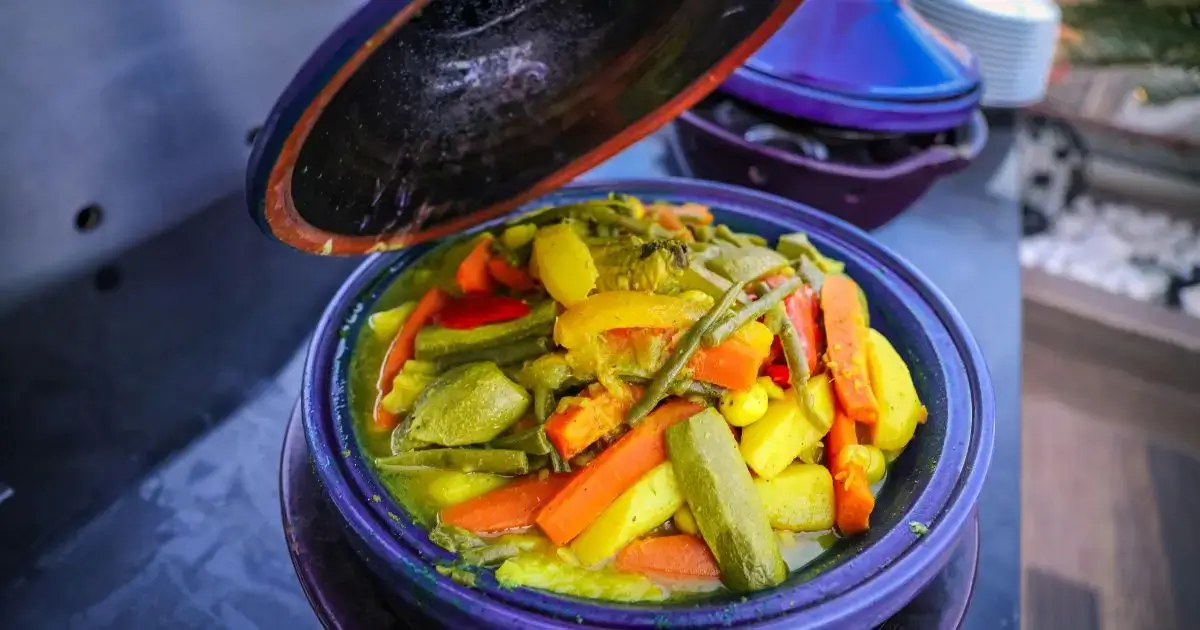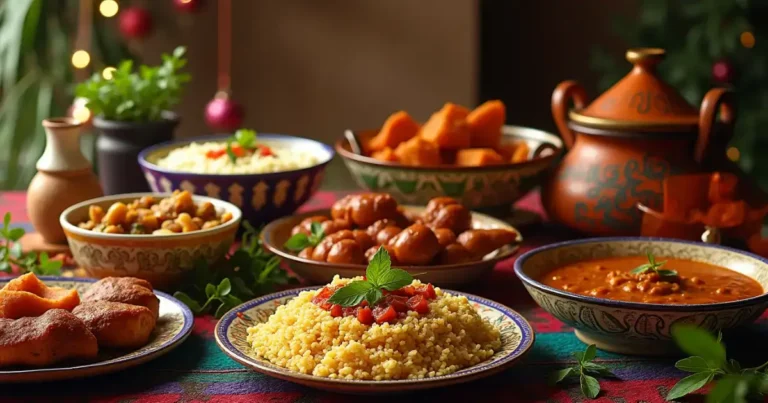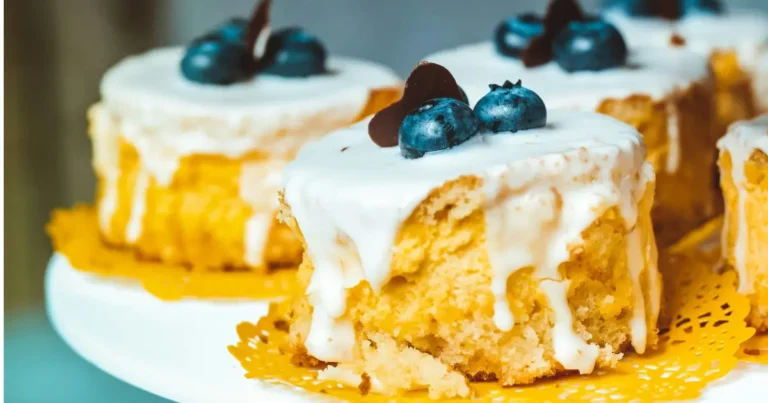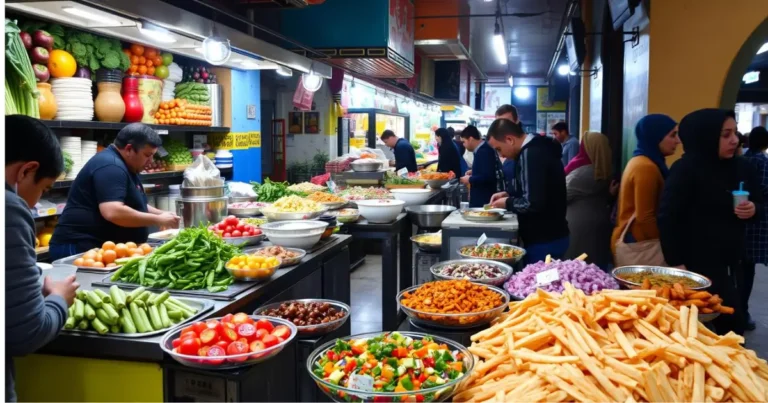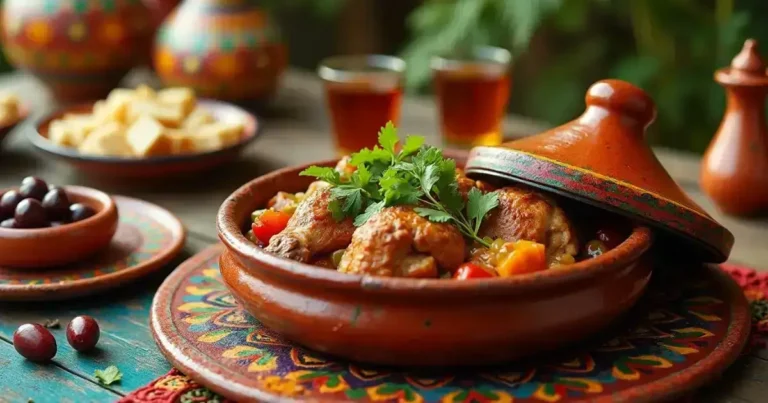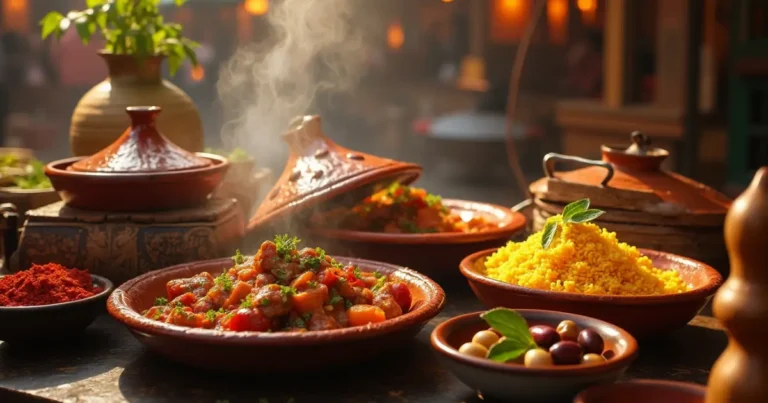Discover the Flavors of Traditional Moroccan Food
Discover the Flavors of Traditional Moroccan Food
Moroccan cuisine is a colorful mix of flavors that excites food lovers everywhere. It’s more than just food; it’s a deep dive into Moroccan culture. Exploring Moroccan dishes takes you on a journey through the country’s varied landscapes and history.
In Marrakech’s lively markets and Casablanca’s coastal areas, Moroccan food shares a story of cultural mix. The mix of spices, cooking methods, and ingredients makes every meal special. Each dish is a perfect blend of herbs, slow-cooked meats, and complex flavors.
Discovering Moroccan cuisine is like entering a world where food is art. It’s all about sharing and community. The recipes passed down through generations show the rich variety of North African cooking. They invite you to enjoy every bite of these amazing Moroccan dishes.
Table of Contents
Key Takeaways
- Moroccan cuisine represents a complex fusion of cultural traditions
- Spices and slow-cooking techniques define authentic Moroccan dishes
- Traditional food in Morocco reflects regional diversity
- Culinary practices emphasize community and hospitality
- Each recipe tells a unique cultural story
- Moroccan cooking balances intricate flavors and techniques
An Introduction to Morocco’s Rich Culinary Heritage
Moroccan cuisine is a colorful mix of flavors. It combines centuries of cultural interactions and cooking traditions. Exploring this world reveals a complex and fascinating culinary landscape.
The Influence of Cultural Crossroads
Berber culinary traditions are at the heart of Moroccan cuisine. They create a unique identity that shows the country’s rich history. The cooking styles blend elements from:
- Arab traders who brought exotic spices
- Mediterranean coastal influences
- Andalusian cooking techniques
- Sub-Saharan African ingredient combinations
Geographic Diversity and Ingredient Selection
Exploring Moroccan cuisine shows how geography affects food. Coastal and mountain areas each bring unique ingredients and cooking methods. These define local Moroccan cuisine.
“The land tells its story through its food, and Moroccan cuisine is a flavorful conversation of heritage and terroir.” – Traditional Moroccan Culinary Proverb
Historical Cooking Method Evolution
Traditional cooking techniques in Morocco have changed over time. They show the adaptability of Berber culinary traditions. Slow-cooking methods like tagine preparation keep cultural wisdom alive while introducing new flavors.
- Ancient earthen cooking vessels
- Open-fire roasting techniques
- Communal cooking practices
Every recipe has a story of survival, celebration, and cultural exchange. It invites you to experience Morocco’s rich culinary heritage.
Essential Spices and Ingredients in Traditional Food in Morocco
Moroccan spices are the heart of Moroccan food, turning simple ingredients into amazing dishes. The flavors start with a mix of aromatic spices perfected over centuries.
Exploring Moroccan cuisine means learning about its key spices. Some essential spices include:
- Ras el Hanout – a complex spice blend with up to 30 ingredients
- Cumin – a key spice with a rich, earthy taste
- Saffron – adds golden color and a delicate flavor
- Paprika – brings warmth and depth to dishes
Traditional Moroccan food is more than just spices. It also uses unique ingredients like preserved lemons, argan oil, and fresh herbs. These ingredients are what make Moroccan dishes uniquely flavorful.
“Spices are the language of Moroccan cooking, telling stories of culture, history, and passion on every plate.”
Every region in Morocco adds its own flavor to the spice mix. Coastal areas use seafood-inspired spices, while mountain regions have bold flavors that match their rugged terrain.
Learning about Moroccan spices opens a world of flavor. It lets you discover the rich flavors of traditional Moroccan food, making it a memorable culinary journey.
The Art of Moroccan Tagine Cooking
Explore the world of Moroccan tagine, a key part of Moroccan food culture. It turns simple ingredients into amazing dishes. This cooking method uses old techniques and rich flavors, telling stories of culture and heritage.
Exploring Tagine Varieties
A Moroccan tagine is more than just a meal—it’s an adventure. Different areas show their creativity with unique tagine recipes:
- Chicken with preserved lemons and olives
- Lamb with prunes and almonds
- Vegetarian options featuring seasonal vegetables
- Seafood tagines from coastal regions
Mastering Tagine Preparation
Making an authentic Moroccan tagine takes patience and skill. The clay pot’s special shape helps keep moisture in. This lets ingredients steam and get deep flavors. Your cooking technique is just as important as the ingredients.
Regional Flavor Journeys
Every Moroccan region adds its own twist to the tagine. Coastal areas might use more seafood, while mountain regions use hearty meats and veggies. The beauty of Moroccan tagine is how it shows off local ingredients and traditions.
“A tagine is more than food—it’s a cultural expression on a plate.” – Moroccan Culinary Tradition
Whether you love cooking at home or exploring new foods, Moroccan tagine is a tasty journey. It’s a way to dive into one of the world’s most interesting food cultures.
Couscous: The Heart of Moroccan Cuisine
Couscous is at the heart of Moroccan food, more than just a meal. It’s a cultural tradition that unites families and communities. These small, steamed semolina pearls have been a key part of Moroccan cooking for centuries. They turn simple ingredients into amazing dishes that share stories of culinary tradition.
Making couscous is an art passed down through generations. Traditionally, women would spend hours rolling the semolina grains by hand. Each region of Morocco adds its own special touch to couscous, using local ingredients and cooking methods.
“Couscous is more than just a dish; it’s a celebration of Moroccan culture and warmth.”
- Classic couscous typically includes:
- Steamed semolina grains
- Slow-cooked vegetables
- Tender meat (chicken, lamb, or beef)
- Rich, flavorful broth
At special times like weddings and family gatherings, couscous is the star. It’s served from a big plate, showing unity and sharing. Different areas have their own couscous styles – coastal places might add seafood, while mountain areas use lamb.
Exploring Moroccan food, you’ll see couscous is more than just food. It’s about patience, skill, and community. Each bite is a trip through Morocco’s rich food culture.
Moroccan Bread and Traditional Breakfast Delicacies
Breakfast in Morocco is a vibrant culinary experience. It showcases the country’s rich gastronomic traditions. In the morning, Moroccan delicacies come alive with delectable breads and street food.
Traditional Moroccan Bread Varieties
Bread is sacred in Moroccan cuisine. You’ll find several unique bread types that make Moroccan street food special:
- Khobz – A round, flat bread perfect for dipping
- Batbout – A soft, pan-cooked bread
- Msemen – Flaky, layered square bread
- Harcha – A semolina-based griddle bread
Popular Breakfast Combinations
Moroccan breakfasts blend savory and sweet flavors. Typical morning meals include freshly baked bread with:
- Olive oil and honey
- Soft cheese
- Homemade jam
- Eggs prepared in various styles
Street Breakfast Specialties
Moroccan street food offers incredible morning options. Early risers can enjoy quick, delicious Moroccan delicacies like:
- Hot bessara (fava bean soup)
- Freshly made msemen with savory fillings
- Herb and egg scrambles
In Morocco, breakfast is more than a meal, it’s a celebration of taste and togetherness. – Moroccan Culinary Tradition
Sweet and Savory Moroccan Pastries
Moroccan pastries are a true art form. They mix rich flavors, complex techniques, and deep cultural roots. These treats give a peek into Morocco’s food heritage, blending sweet and savory in a delightful way.
Exploring Moroccan pastries, you’ll find a wide range of treats. They show the nation’s creativity in the kitchen. Some must-try Moroccan pastries include:
- Briouats: Delicate triangular pastries filled with meat, cheese, or seafood
- Chebakia: Honey-soaked sesame cookies popular during Ramadan
- Almond-based pastries with delicate syrup coatings
- Phyllo-wrapped savory parcels with spiced fillings
Making these pastries takes a lot of skill and patience. Bakers often spend years mastering their craft. They pass their techniques from generation to generation. Each pastry has a story of family, region, and innovation.
“In Morocco, pastries are not merely food; they symbolize hospitality and celebration.”
These delicacies play a big role in Moroccan culture. They’re enjoyed at weddings, welcome guests, and mark religious festivals. Whether you like sweet or savory, Moroccan pastries offer a memorable taste of the country’s rich food scene.
The Ritual of Moroccan Mint Tea
Moroccan mint tea represents both hospitality and tradition. It’s more than a drink; it’s a social ritual that brings people together. It celebrates the spirit of community.
Tea Preparation Ceremony
Preparing Moroccan mint tea is an art. It requires skill and precision. The traditional steps include:
- Selecting high-quality green tea leaves
- Brewing tea with boiling water
- Adding fresh mint leaves
- Pouring tea from a height to create natural foam
Cultural Significance and Etiquette
In Moroccan culture, mint tea is more than a drink. It’s a sign of respect and welcome. Guests are offered tea as a gesture of hospitality.
The pouring technique shows respect. Three rounds are typically served:
- First glass: Bitter like life
- Second glass Strong like love
- Third glass Sweet like death
Different Tea Variations
While classic Moroccan mint tea is consistent, there are regional variations. Some areas add herbs or adjust sugar levels. The core ingredients are green tea, fresh mint, and sugar.
“A guest without tea is as incomplete as a day without sunshine.” – Moroccan Proverb
Street Food Culture in Moroccan Cities
Moroccan street food is a lively culinary scene that shows the heart of city life and traditional tastes. Walking through Marrakech and Casablanca’s markets and alleys, you find a world of flavors. These flavors tell stories of cultural heritage.
Street food in Morocco is more than just food. It’s a way for people to come together and share traditions.
- Popular Moroccan street food items include:
- Merguez – spicy lamb or beef sausages
- B’stilla – savory-sweet meat pastry
- Grilled kebabs with aromatic spices
“Street food is the heartbeat of Moroccan urban cuisine, where every bite tells a story of generations past.”
These dishes are more than quick snacks.They are a cherished tradition handed down through generations. They show the rich flavors of local ingredients and old cooking ways.
- Key characteristics of Moroccan street food:
- Fresh, locally sourced ingredients
- Bold, complex spice combinations
- Quick preparation methods
- Affordable and accessible to all
Exploring Moroccan street food, you see how each area adds its own twist to old recipes. From coastal to mountain towns, street food shows off local products and cultural influences.
Modern Interpretations of Traditional Moroccan Dishes
Moroccan cuisine is always changing, mixing old traditions with new cooking ideas. Chefs in Morocco and worldwide are making traditional dishes exciting again. They create new dining experiences that honor their roots and use modern techniques.
Fusion Cuisine Trends
Today’s chefs are mixing things up in Moroccan cooking. They’re combining:
- Traditional Moroccan spices with international ingredients
- Classic tagine recipes with modern plating techniques
- Local ingredients prepared using global cooking methods
Contemporary Cooking Methods
Modern Moroccan cooking uses the latest technologies. Chefs are using molecular gastronomy to make traditional dishes new again. They’re also using sous-vide cooking and precise temperature control to enhance classic Moroccan dishes.
Restaurant Innovations
Restaurants serving Moroccan food are changing the dining scene. Chefs are offering:
- Interactive dining concepts
- Tasting menus that tell cultural stories
- Sustainable and locally sourced ingredient programs
*”We’re not just cooking food, we’re preserving culture while creating something new,”* says renowned Moroccan chef Ahmed Lahlou.
These changes keep Moroccan cuisine fresh and exciting. They make sure it stays relevant globally while keeping its rich cultural heritage.
Conclusion
Exploring traditional food in Morocco is like going on a culinary journey. It shows the beauty of cultural diversity and rich food traditions. You see how Moroccan cuisine is a mix of flavors from different cultures.
The mix of Arab, Berber, and Mediterranean cooking makes dining special. It’s not just about eating. Moroccan food, like tagines and mint tea, tells stories of community and hospitality.
Trying traditional Moroccan food is more than just tasting dishes. It’s about learning a history that values local ingredients and cooking methods. Each dish shows the country’s landscape, climate, and traditions.
Your trip through Moroccan cuisine is an adventure. It shows the beauty and evolution of a food culture that respects its past. Whether you try street food in Marrakech or a home-cooked meal, Moroccan food is unforgettable. It unites people through the shared joy of food.

